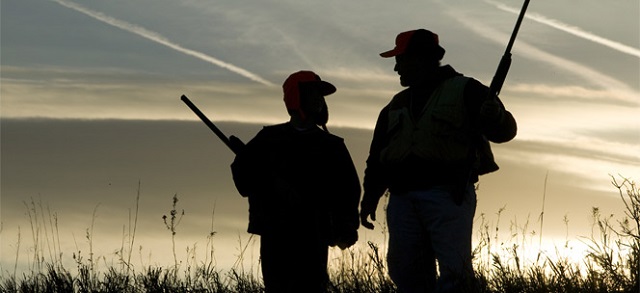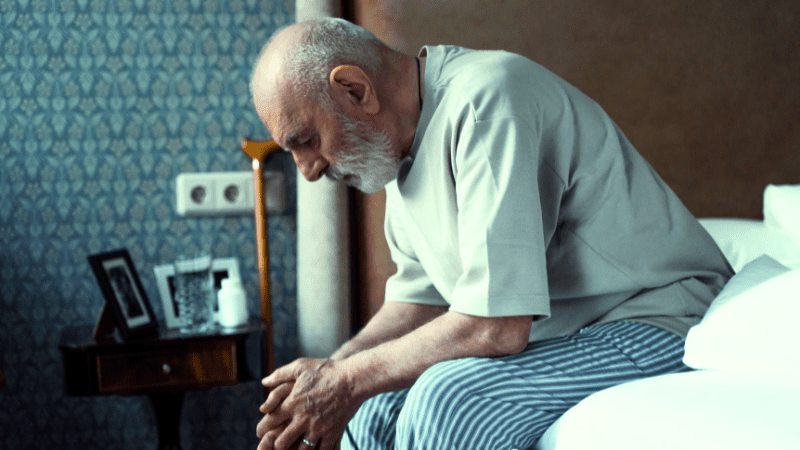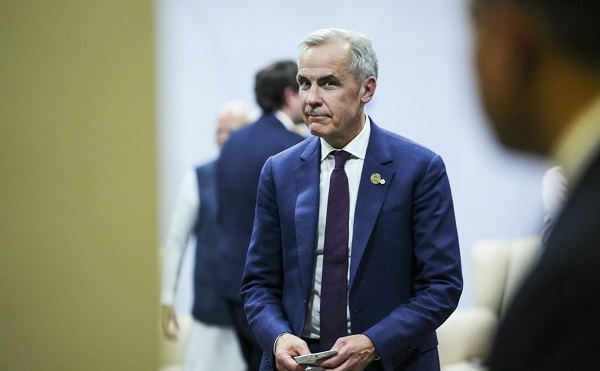National
Parks Canada deer hunt project to cost taxpayers $12 million

From the Canadian Taxpayers Federation
Author: Ryan Thorpe
The expert marksmen, from the United States and New Zealand, only managed to kill 84 deer. Eighteen were the wrong kind of deer
At $10,000 a deer, this is already an expensive hunting trip.
But the bill is about to get a lot bigger.
Parks Canada has earmarked $12 million for its controversial plan to eradicate a deer species and restore native vegetation on a tiny island in British Columbia, according to access-to-information records obtained by the Canadian Taxpayers Federation.
“It’s hard to imagine how Parks Canada could spend millions shooting deer,” said Franco Terrazzano, CTF Federal Director. “Here’s the kicker: hunters who actually live on the island are bagging these deer for free.”
The $12-million Fur to Forest program is a Parks Canada effort to eradicate the European fallow deer population on Sidney Island (located between the coast of B.C. and Vancouver Island), and restore native vegetation, tree seedlings and shrubs.
So far, Parks Canada has employed exotically expensive hunting techniques.
Foreign sharpshooters armed with restricted semi-automatic rifles hunted the deer during phase one of the operations. Phase one cost more than $800,000, including $67,000 spent renting a helicopter, for a hit to taxpayers of $10,000 a head.
The expert marksmen, from the United States and New Zealand, only managed to kill 84 deer. Eighteen were the wrong kind of deer – native black-tailed deer. They weren’t able to confirm the species of the three other deer shot.
It is illegal to harvest the wrong species of animal during a hunt in B.C.
Meanwhile, residents of Sidney Island organized their own hunt last fall. They killed 54 deer at no cost to taxpayers.
“It’s crazy that Parks Canada flew in marksmen from other countries to shoot deer,” Terrazzano said. “It’s even crazier that these ‘marksmen’ kept shooting the wrong kind of deer.”
It’s been widely reported the project will cost $5.9 million.
But the records obtained by the CTF show the story gets worse for taxpayers. A detailed project budget obtained through an access-to-information request reveals Parks Canada plans to spend $11.9 million on the scheme.
Taxpayers will be on the hook for $4.1 million for the killing of deer on Sidney Island, according to the records. An additional $2.8 million will go towards the salaries and benefits of Parks Canada staff.
A total of $137,000 will be spent on “firearms certification for international workers” throughout the project, while $1.4 million will go towards studies and analysis, and nearly $800,000 is earmarked for “Indigenous participation.”
Breakdown of costs, Fur to Forest program, access-to-information records
|
Salaries |
$2.3 million |
|
Analysis and Studies |
$1.4 million |
|
Indigenous Participation |
$800,000 |
|
Deer Eradication |
$4.1 million |
|
Miscellaneous* |
$3.3 million |
|
Total |
$11.9 million |
*Includes $53,000 for “forest restoration” services, “plants” and “seedlings.”
Parks Canada estimates there are between 300 and 900 invasive deer on the island. Phase two of the operation, which is scheduled to begin this fall, will involve ground hunting with dogs.
“Let’s just state the obvious: Parks Canada is bad at hunting and more money isn’t going to make it better,” Terrazzano said. “The good folks who live on Sidney Island are clearly more qualified to handle this and the government should get out of their way.”
Great Reset
Canada’s MAiD (State Sanctioned Murder) Report Just Dropped

It’s More Horrifying Than Anyone Will Admit
There is no dignity in a society that sees the suffering and chooses to eliminate the sufferer instead of the suffering.
Canada finally released its 2024 MAiD (state sanctioned murder) report, shockingly quiet so people wouldn’t see it. Right after the budget, and right before Christmas. A late-November drop, as if 16,499 state-sanctioned murders were an administrative side note instead of a national alarm bell, one that should be absolutely terrifying Canadians. That number is a almost a 7% increase!!! from the year prior. Euthanasia now accounts for 5.1% of all deaths in the country. Let that sit for a minute. More than one out of every twenty deaths in Canada is no longer natural, accidental, or medical it’s chosen, coerced, approved, and facilitated by the state.
Now the most disturbing trend isn’t the overall rise. It’s the massive increase in Track 2 deaths, these are people who were NOT AT ALL terminally ill. Those deaths rose by 17%.
Kelsi Sheren is a reader-supported publication.
To receive new posts and support my work, consider becoming a free or paid subscriber.
17%!
Track 2 is MAiD’s (state sanctioned murder) quiet backdoor, one that almost anyone can access. People who aren’t dying, but are suffering, disabled, lonely, financially struggling, or simply worn down by a system that failed to care for them. The government likes to use sterile language “grievous and irremediable condition” but it refuses to define it. That ambiguity isn’t an accident. It’s policy. It’s how they kill people without justification.
The numbers don’t lie, even when the government tries to hide them. Since legalization, Canada has recorded 76,475 deaths by MAiD up to the end of 2024. Realistically, by today we’re closing in on 92,000.
That’s the population of a mid-sized city. Gone.
92,000 human beings. Gone, before their time all because CAMAP (Canadian Association of MAiD Assessors and Providers) convinced people who were suffering they were too damn weak to try.
Quebec leads the country with 5,998 deaths in 2024. Ontario follows with 4,944, then British Columbia at 2,997. Even these numbers don’t match what provincial reports say. Quebec claims 6,058. BC says 3,000. Why the discrepancy? No one seems eager to answer.
When the data moves faster than the government’s honesty, you know something’s off and something been off for a minute now.
Track 2 deaths have always been the canary in the coal mine, yet no ones seems to care unless it’s one of their family members. Those not tied to terminal illness hit 732 cases in 2024. In 2021 there were 224. The curve isn’t just rising; it’s accelerating at a pace that will destroy a country.
And who are these people?
They’re younger. They’re more often women. They’re overwhelmingly people living with disabilities. They are Canadians who needed support and instead got a syringe. More than 61% of Track 2 deaths were people living with disabilities. Yet many disabled Canadians don’t even identify as disabled on paper. So the real number? Higher. Much higher.
Every major reason listed for choosing MAiD (state sanctioned murder) loss of independence, loss of mobility, inability to participate in meaningful activities is directly tied to disability or chronic health issues. When your supports are stripped, “choice” becomes a fiction.
The “other” category, is where any sort of accountability goes to die in this country along with our souls. The most suspicious data point continues to grow unnoticed. The “other” category is over 46% of disabled Track 1 deaths and 56% of disabled Track 2 deaths are filed under “other.”
What’s in “other”?
Organ failure. Autoimmune disease. Frailty. Chronic pain. Diabetes. Mental disorders.
In any honest system, these would not be “miscellaneous.” In Canada’s system, they are conveniently undefined so nothing can be challenged.
People choosing Track 2 death are more likely to be poor, living in struggling neighbourhoods, in institutions and on disability. This isn’t compassion. It’s triage disguised as mercy. When life becomes unaffordable, MAiD (state sanctioned murder) becomes the “cheap solution.”
One of the leading causes of this choice to die is loneliness….this part should haunt every Canadian with a conscience. The report tries to downplay loneliness as a factor, but the numbers betray reality:
21.9% of Track 1 deaths
44.7% of Track 2 deaths
…were tied single handedly to loneliness and isolation.
That’s at least 3,800 people in 2024 who died because they were alone.
But anyone who’s worked with veterans, trauma survivors, or the disabled knows the truth loneliness is wildly underreported. People list their medical condition to qualify. But loneliness and despair? That’s the gasoline soaking everything underneath.
Track 2 recipients were three times more likely to be receiving mental health or social service support compared to Track 1. The mental illness “safeguards”? They’re paper-thin.
The government wants us to believe MAiD (state sanctioned murder) is about dignity. But dignity is a human experience, not a checkbox. Dignity requires connection, support, purpose, safety. None of those can be injected into a vein.
MAiD (state sanctioned murder) was sold as a last resort for the dying. It is now an early exit for the neglected. There is no integrity in a system where people choose death because life became bureaucratically inconvenient. There is no compassion in telling a disabled person the waitlist for care is years but death is available next Tuesday. There is no dignity in a society that sees the suffering and chooses to eliminate the sufferer instead of the suffering.
Parliament is currently debating Bill C-218, which would stop the expansion of MAiD for mental illness. Given what the data shows, mental illness is already driving many Track 2 deaths, even though it isn’t technically allowed on its own.
Canada is no longer drifting, its fully submerged in the dark and this is something that can’t be undone once normalized. MAiD (state sanctioned murder) is no longer a rare compassionate exception. It is becoming a cultural default for people society doesn’t know how to support.
If we don’t reverse this slide now, we’ll look back and wonder how we ever confused convenience with compassion. This system isn’t mercy. It’s abandonment dressed up as policy.
The conversation needs to get louder, not gentler and I plan to make it so loud the pro death cult’s ears bleed.
KELSI SHEREN
https://csfv.gouv.qc.ca/
https://alexschadenberg.
https://alexschadenberg.
https://alexschadenberg.
– – – – – – – – – – – – –
One Time Donation! – Paypal – https://paypal.me/
Buy me a coffee! – https://buymeacoffee.com/
Let’s connect!
Youtube – https://www.youtube.com/@
Substack: https://substack.com/@
TikTok – https://x.com/KelsiBurns
MAiD
Health Canada report finds euthanasia now accounts for over 5% of deaths nationwide

From LifeSiteNews
Internal documents from Ontario doctors in 2024 that revealed Canadians are choosing euthanasia because of poverty and loneliness, not as a result of an alleged terminal illness.
Death by doctor-assisted lethal injection, under the title Medical Assistance in Dying (MAiD), now accounts for over 5 percent of all deaths in Canada.
In November, Health Canada published the Sixth Annual Report on Medical Assistance in Dying, which tracked the expansion of euthanasia in 2024, with 16,499 Canadians receiving MAiD, amounting to 5.1 percent of the total deaths in Canada.
“The Government of Canada will continue its work to help ensure that the legislation on MAiD reflects the needs of people in Canada, protects those who may be vulnerable, and supports autonomy and freedom of choice,” the report asserts.
Health Canada noted that MAiD is not considered a cause of death by the World Health Organization and, therefore, “the number of MAiD provisions should not be compared to cause of death statistics in Canada in order to determine the prevalence (the proportion of all decedents) nor to rank MAiD as a cause of death.”
However, the government agency did admit that 16,499 people received MAiD in 2024, which amounted to 5.1 percent of “people in Canada who died.”
The report noted that that was “a small (0.4%) increase from 2023,” adding that “this percentage may change with final counts of deaths in Canada from Statistics Canada.”
Notably, the year-over-year increase was 6.9 percent, a significant slowdown from prior years, such as the 36.8 percent increase from 2019–2020. Health Canada suggested that MAiD provisions are beginning to “stabilize,” though long-term trends require more years of data.
According to the data, 95.6 percent of the deaths were Track 1, meaning those whose death was foreseeable, compared to only 4.4 percent being Track 2 requests, which end the lives of those who are not terminally ill but have lost the will to live due to their having chronic health problems.
“Although Track 2 provisions represented 4.4% of MAiD cases in 2024, they represented close to a quarter (24.2%) of all MAiD requests that were assessed as ineligible,” the report stated.
At the same time, internal documents from Ontario doctors in 2024 that revealed Canadians are choosing euthanasia because of poverty and loneliness, not as a result of an alleged terminal illness.
The report further revealed that 63.6 percent of the Canadians who were euthanized reported cancer as their underlying medical condition.
Currently, wait times to receive genuine health care in Canada have increased to an average of 27.7 weeks, leading some Canadians to despair and opt for assisted suicide instead of waiting for medical aid. At the same time, sick and elderly Canadians who have refused to end their lives have reported being called “selfish” by their providers.
Meanwhile, the Liberal government has worked to expand euthanasia 13-fold since it was legalized, making it the fastest growing euthanasia program in the world.
The most recent reports show that euthanasia is the sixth highest cause of death in Canada; however, it was not listed as such in Statistics Canada’s top 10 leading causes of death from 2019 to 2022.
Asked why it was left off the list, the agency said that it records the illnesses that led Canadians to choose to end their lives via euthanasia, not the actual cause of death, as the primary cause of death.
-

 Daily Caller9 hours ago
Daily Caller9 hours agoTech Mogul Gives $6 Billion To 25 Million Kids To Boost Trump Investment Accounts
-

 Artificial Intelligence2 days ago
Artificial Intelligence2 days ago‘Trouble in Toyland’ report sounds alarm on AI toys
-

 National1 day ago
National1 day agoMedia bound to pay the price for selling their freedom to (selectively) offend
-

 Bruce Dowbiggin1 day ago
Bruce Dowbiggin1 day agoSometimes An Ingrate Nation Pt. 2: The Great One Makes His Choice
-

 Business9 hours ago
Business9 hours agoCanada’s future prosperity runs through the northwest coast
-

 Business1 day ago
Business1 day agoWhy Isn’t There a Cure for Alzheimer’s Disease?
-

 Daily Caller2 days ago
Daily Caller2 days agoTom Homan Predicts Deportation Of Most Third World Migrants Over Risks From Screening Docs
-

 Energy2 days ago
Energy2 days agoCanadians will soon be versed in massive West Coast LPG mega-project










